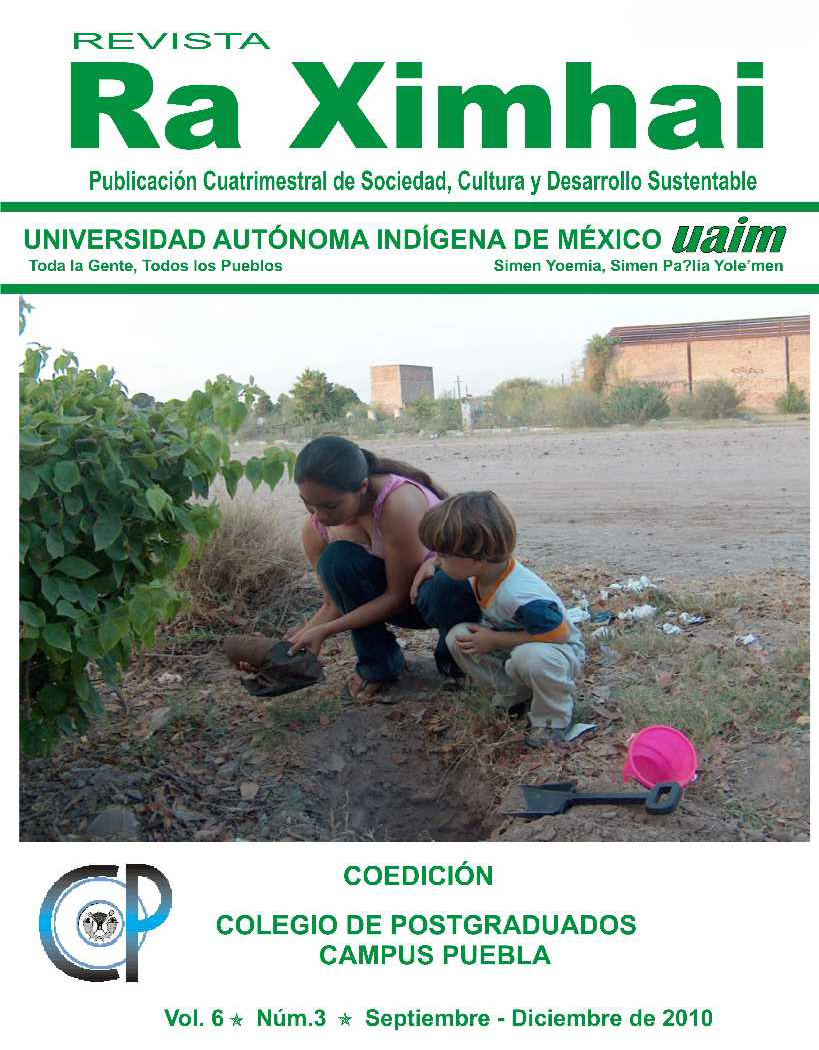Estimation of hydraulic conductivity and fine content from experimental laws that relate hydraulic and electrical parameters
DOI:
https://doi.org/10.35197/rx.06.03.2010.14.hpKeywords:
hydraulic conductivity, fine content, electric resistivity, formation factor, porosity, electric tomographyAbstract
Hydraulic conductivity is a basic element in the advancement of knowledge of a geological medium, both in the processes of flow and transport of contaminants and in projects for protection, management and handling of the environment, as well as in the development of public policies for the protection of ecosystems, among others. The objective of this work is to obtain the hydraulic conductivity (K) and the content of fines (C) of a saturated granular medium by using two empirical laws. One relates the electrical conductivity of a saturated granular medium σo and the saturating water σw which depends on the formation factor (F), the cation exchange capacity (CEC) and the content of fines in the saturated subsoil. Through data obtained from 18 samples of materials from 6 wells, the relationship between F- C and CEC-C and Qv – C was obtained, so that the equation is reduced to a function of σo in terms of σw and C, with an adjustment value R=0.97. A second experimental law used is the one resulting from the experimental relationship between K and C, obtaining
K 0.1804.C 1.4054 with an R=0.96. From both experimental expressions, relationships are constructed and
knowing one, the other is obtained. Under the indicated scheme, sections of electrical conductivity of the saturated medium and fine content are obtained, obtaining that the subsoil in the study area is made up of an upper layer of fine materials and underlying this is a medium in which sand predominates.
Downloads
References
Archie, G.E. 1942. The Electrical Resistivity Log as an Aid in Determining some reservoir characteristics. Trans. AIMME. 146: 54-62.
CNA, Comisión Nacional del Agua. 2002. Determinación de la disponibilidad de agua en el acuífero Río Sinaloa. México, D.F.: 36 pp.
Donado-Garzón, L. D. 2004. Modelo de conductividad hidráulica en suelos. Tesis de magíster en Ingeniería-Recursos Hidráulicos. Universidad Nacional de Colombia, Bogotá. Colombia. 162. pp.
Ersahin, S., Gunal, H., Kutlu, T., Yetgin, B. and Coban, S. 2006. Estimating especific surface area and cation exchange capacity in soils using fractal of particle-size distribution. Geoderma. 136: 588-597.
INEGI. 2007. Cuaderno estadístico municipal, Guasave, Sinaloa. Aguascalientes, México, Edición 2006: 225 pp
Juárez Badillo, E. y Rico Rodríguez, A. 1999. Mecánica de Suelos. Tomo I. Fundamentos de la Mecánica de Suelos. 3ra. Vigésimo primera reimpresión. Ed. Limusa. 642 pp.
Khalil, M. A and Monterio-Santos F. A.. 2009. Influence of Degree of Saturation in the Electric Resistivity–Hydraulic Conductivity Relationship. Surveys in Geophysics. 30(6):601-615.
Kirsch, R. 2009. Groundwater Geophysics. A tool for Hydrogeology. 2nda. edición. Springer Berlin Heidelberg, Germany. 542 pp.
Landini, A. M., Martínez, D., Días, H., Soza, E., Agnes, D. y Sainato, C. 2007. Modelos de infiltración y funciones de pedotransferencia aplicados a suelos de distinta textura. C. Suelo (Argentina). 25 (2): 123-131.
Peinado-Guevara, H.; Herrera-Barrientos, J. y Ladrón de Guevara, M. 2009. Determinación de la conductividad hidráulica mediante medidas de resistividad eléctrica. Ingeniería Hidráulica en México. XXIV (4): 123-
Rojas, L. M., Rojas-Palacio, H., Menjívar- Flórez, J. C. 2008. Estimación de la conductividad hidráulica saturada in situ en un suelo tratado con vinaza. Acta Agron (Palmira). 57 (2): 125-128.
Salem, H.S. 2001. Modelling of lithology and hydraulic conductivity of shallow sediments from resistivity measurements using Schlumberger Vertical Electric Soundings. Energy Sources. 23: 599-618.
SARH 1974. Manual para análisis de suelos y aguas. Secretaria de Agricultura y Recursos Hidráulicos. México, D.F. 241 pp.
Sen, P.N., Goode, P.A., and Sibbit, A. 1988. Electrical conduction in clay bearing sand-stone at low and high salinities. J. Appl. Phys. 63: 4832-4840.
Shevnin, V., Delgado-Rodríguez, O., Mousatov,
A. and Ryjov, A. 2004. Soil resistivity measurements for clay content estimation and its application for petroleum contamination study. SAGEEP-2004, Colorado Springs: 396- 408.
Shevnin, V., Delgado-Rodríguez, O., Mousatov,
A. and Ryjov, A. 2006. Estimation of hydraulic conductivity on clay content in soil determined from resistivity
data. Geofisica Internacional. 45 (3):
-207.
Vidal-Méndez, E. 2008. Cálculo de la conductividad hidráulica de los acuíferos a partir de la resistividad eléctrica. Minería y Geología Revista de Ciencias de la Tierra, Cuba. 24(2): 1-8.
Yadav G.S. and H. Abolfazli, 1998. Geoelectrical soundings and their relationship to hydraulic parameters in semiarid regions of Jalore, northwestern India. Journal of Applied Geophysics. 39 (1): 35-51
Downloads
Published
How to Cite
Issue
Section
License
Copyright (c) 2010 Héctor José Peinado Guevara, Carlos René Green Ruíz, Omar Delgado Rodríguez, Jaime Herrera Barrientos, Salvador Belmonte Jiménez, María de los Ángeles Ladrón de Guevara Torres, Vladimir Shevnin

This work is licensed under a Creative Commons Attribution-NonCommercial 4.0 International License.
Usted es libre de:
- Compartir — copiar y redistribuir el material en cualquier medio o formato
- Adaptar — remezclar, transformar y construir a partir del material
- La licenciante no puede revocar estas libertades en tanto usted siga los términos de la licencia
Bajo los siguientes términos:
- Atribución — Usted debe dar crédito de manera adecuada , brindar un enlace a la licencia, e indicar si se han realizado cambios . Puede hacerlo en cualquier forma razonable, pero no de forma tal que sugiera que usted o su uso tienen el apoyo de la licenciante.
- NoComercial — Usted no puede hacer uso del material con propósitos comerciales .
- No hay restricciones adicionales — No puede aplicar términos legales ni medidas tecnológicas que restrinjan legalmente a otras a hacer cualquier uso permitido por la licencia.








